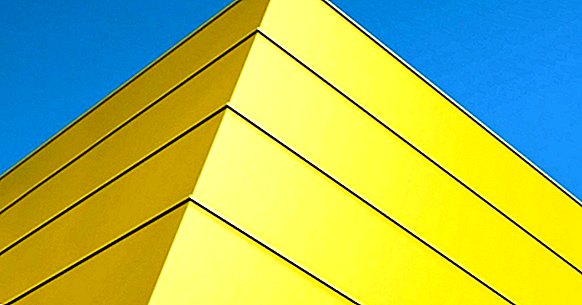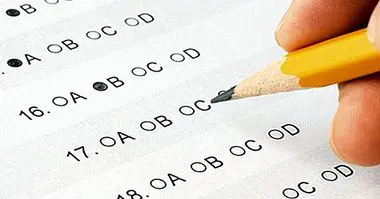What does yellow mean in Psychology?
In general, the color yellow is associated with light, gold, happiness and energy. But where do these relationships between this color and a series of objects, elements and even emotions come from? Have the same associations been made in all cultures?
In this article we will see some of the meanings attributed to the yellow color in different cultures , as well as the main paradigms of description of the chromatic systems that exist.
- Related article: "Psychology of color: meaning and curiosities of colors"
Main ways to describe colors
When it comes to describing colors, the main color systems are divided into two broad categories: one describes the light properties of each color; and the other defines its pigmenting characteristics .
This goes back to the seventeenth century, when Newton's studies on the decomposition of light allowed us to establish a spectrum of seven main colors: violet, indigo, blue, green, yellow, orange and red. Later a system of colors was established, which are those that the human eye has the ability to differentiate, and that are therefore known as primary colors. These are yellow, cyan and magenta, which usually translate into yellow, blue and red respectively. On the other hand, the colors that are derived from the mixture of the latter are known as secondary colors.
At the same time, the German scientist and novelist Johann Wolfgang von Goethe, developed a theory of colors where he analyzes the nature and form of representation of each one. Consequently it became possible to attribute symbolic meanings to each one. In his theory, yellow is associated with the following values and categories :
- Moral: Good.
- Intellectual: Understanding
- Status: Scientists.
- Traditions: Lighting and science.
In addition, yellow is considered a warm tone, which can lead to warm colors (those that are generated from mixing yellow-red, yellow-orange). But, at the same time, yellow can lead to cold colors, as long as it is mixed with color with green.
In the same sense, far from there being an exclusive relationship between yellow and a specific cultural meaning, it is a series of ambiguous senses that have crossed different cultures.
Meaning of the yellow color
The yellow and the different meanings (and even emotions) that can evoke, have had particular characteristics in different cultures. Although the psychology of color has studied how chromatic exposure produces a series of physiological reactions , and a specific emotional experience; Anthropology has also shown how colors have been charged with different cultural meanings. At the same time, colors have represented important elements or phenomena for different times and cultures.
We will see below the meaning associated with the yellow color in three different cultures.
1. Western Europe
For centuries, in western Europe, yellow was used to mark lives diverted in the eyes of Christianity, for example, for prostitution, the sick, lepers, heresy, or anyone who does not profess the same religion, like the Jews.
So, in the past yellow had been associated with devaluation , especially during the Middle Ages. He invoked, in this sense, idea of disturbance and related attitudes.
Although previously it had been a symbol of divinity because of its relation to the sun, and later it had expressed the idea of wealth; soon the yellow acquired meanings in the opposite sense: an association with the color of the bile, which represents as much anger or debauchery, as the lie, the betrayal and the heresy.
- Maybe you're interested: "What does the color red mean in Psychology?"
2. Prehispanic cultures
In prehispanic cultures, as in ancient Mexico, yellow was associated with fire and sun (along with red). Likewise, yellow is related to one of the four deities that make up the universe , according to the Tarascan worldview: Tiripeme de norte.
It also represented one of the symbols of maintenance because of its association with corn. In fact, it is one of the four colors related to the ritual to said food, very important in cultural terms. Similarly, yellow was the color associated with the stars, and therefore, was related to the connection between the latter and gold. In the same sense, yellow could be a symbol of wealth, but at the same time of death. On the other hand, it could also represent clarity and energy.
3. In Asia
Two of the main explanatory theories of the symbology of colors in Asia have been Feng Shui and Yin Yang. Of the first, its relationship with the Taoist philosophy and the consideration of the five elements by means of which the energy circulates stand out. These elements represent the whole environment, including the chromatic manifestations. In this sense, yellow would be related to the earth element, which is in turn representative of a dense and conservative atmosphere, but a also of disorder or instability .
On the other hand, in the Yin Yang, and in its representation of the world through complementary elements; Yellow would be associated with Yang because of its link to the Sun and heat, in turn associated with masculinity. Finally and for the same reason, yellow has historically been positioned as a representative color in China, although so have red and green.
Bibliographic references:
- Llorente, C., García, F. and Soria, V. (2017). Comparative analysis of the chromatic symbology in advertising. Nike in China and Spain. Vivat Academy. Communication Magazine. 142, 51-78.
- Saborío-Bejarano, AG. (2011). The canon of color. Academic Act, 48: 43-59.
- Gómez, Luis (2006). An approach to the theme of color in ancient Mexico. Cuicuilco, 13 (36): 151-175.
- Gastañeta, P. (2002). The chromosemiotic. The meaning of color in visual communication. 46-58. Retrieved September 4, 2018. Available in //200.62.146.19/bibvirtualdata/publicaciones/comunicacion/n3_2002/a07.pdf.
- Sánchez, A. (1999). The color: symbol of power and social order. Notes for a history of appearances in Europe. Space, Time and Form, 12: 321-354.



















